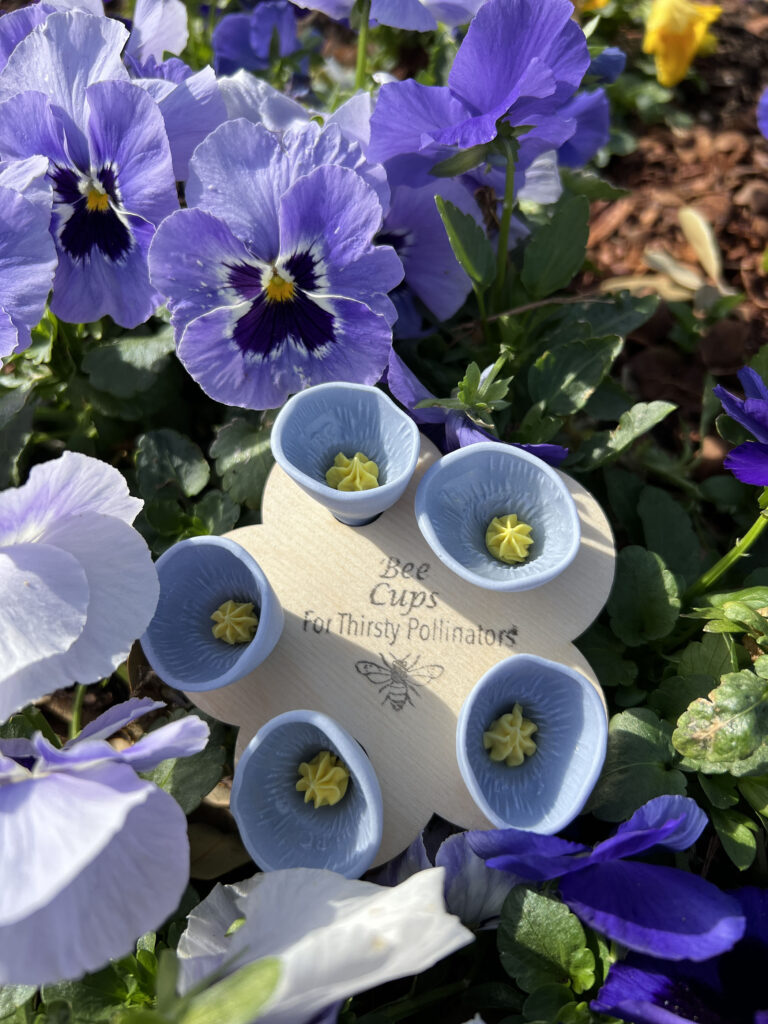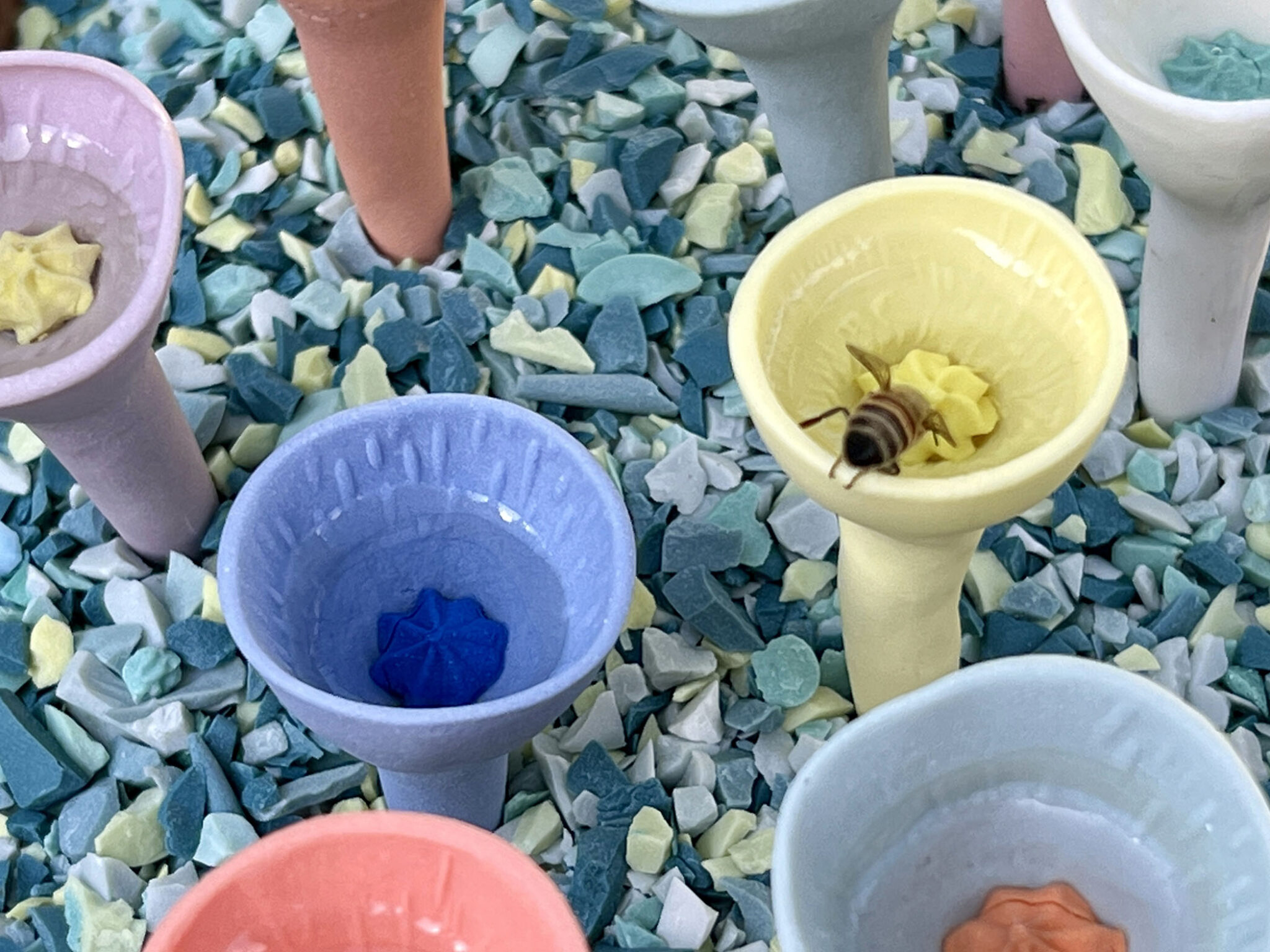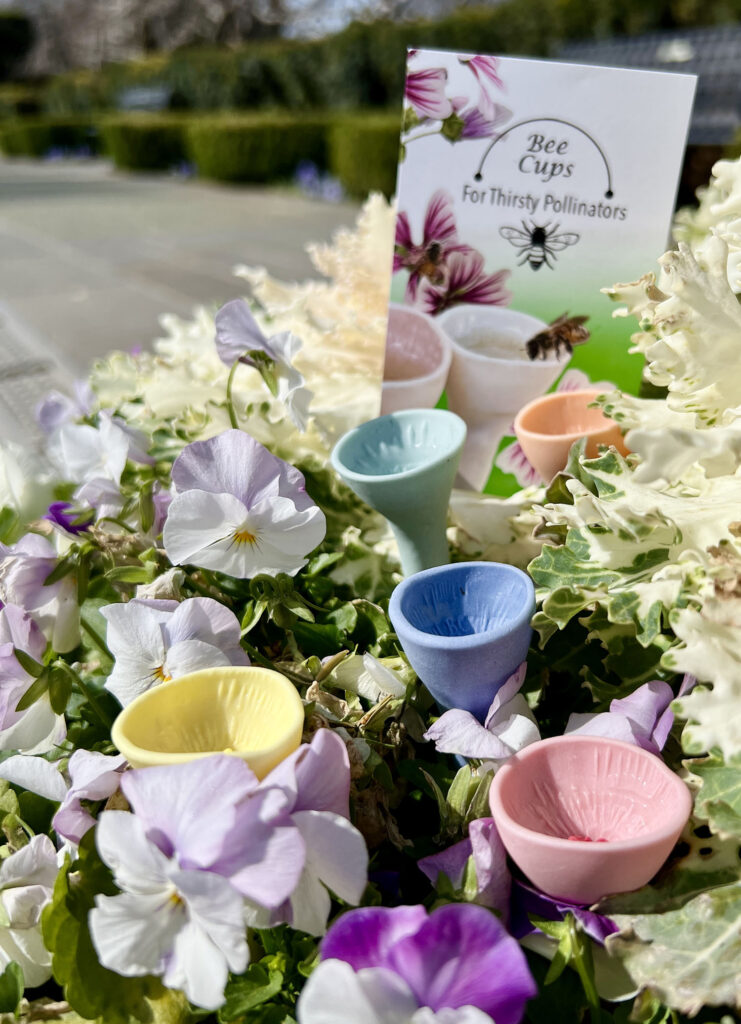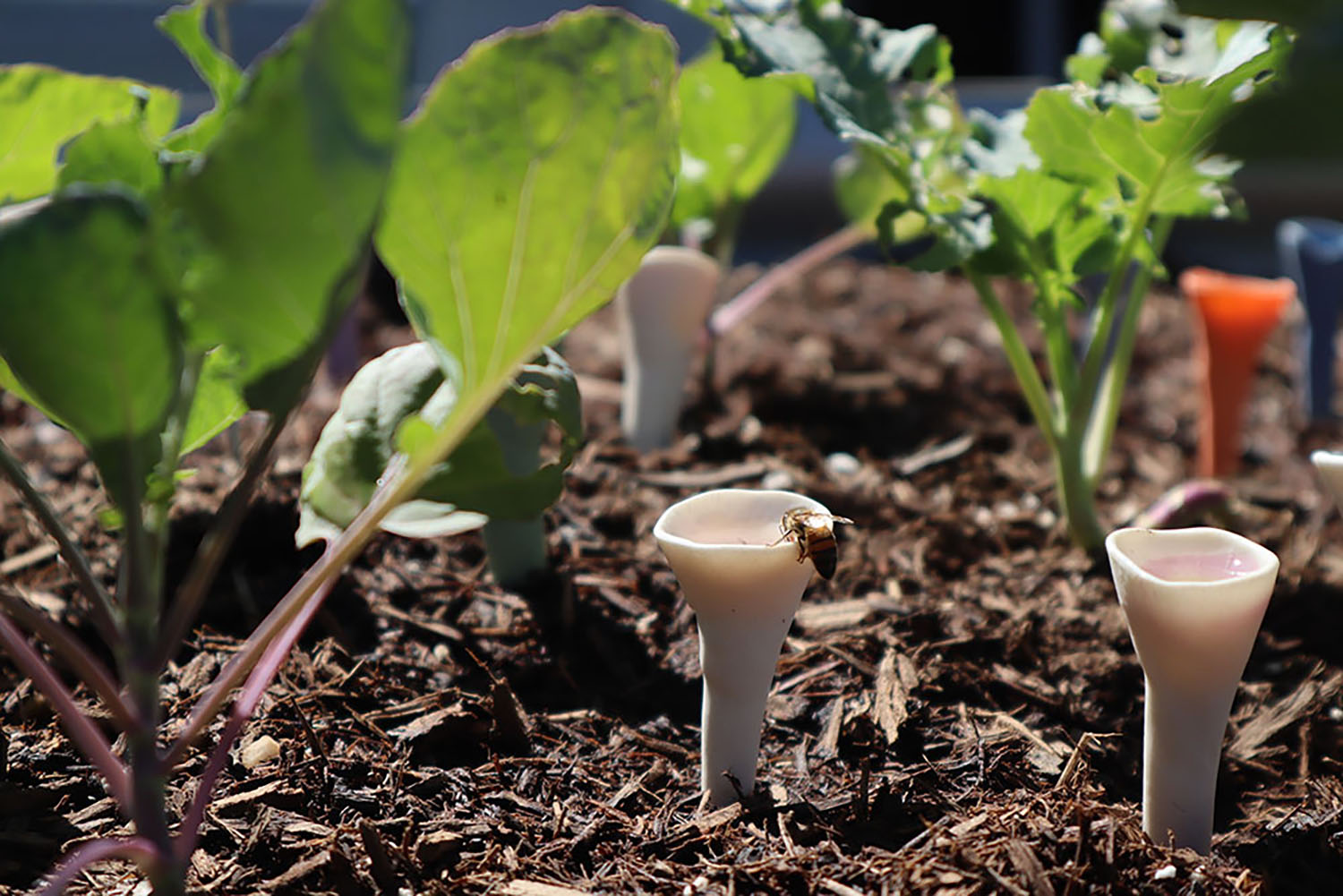Provide Bees in Your Garden with Water
You’ve heard how important bees are to the crops that sustain us. It is bees that ensure most crops are pollinated. You’ve also likely heard it’s important to include pollinator-friendly plants in your garden to attract bees. But did you know it’s equally important to keep bees hydrated?
Like all wildlife visitors to our SoCal gardens, bees need water. These busy insects use H2o for several vital purposes. These include controlling their body temperature, which is important during our hot days. They also use water to dilute honey to feed their little ones, and water is used for evaporative cooling of their hives.
Provide bees in your garden with water, and they’ll be able to do their best job at pollinating your flowers, fruits and veggies.

Bees Need H2o

While most insects obtain water from their food, like leaves, a bee’s diet doesn’t contain much moisture. This is where you, the SoCal gardener, comes in. Providing bees with a water source will help them do what they visit your garden to do—pollinate. A fresh source of water will also help keep bees healthy.
But it’s not always easy to provide bees with a safe source of water. Bees cannot swim, so if the water is too deep and they attempt to take a drink and slide in, they could drown. It’s also important that the water is clean and free of debris.
Install Beautiful Bee Cups
So, how to best go about providing bees with a clean source of liquid nourishment?
I’ve recently been introduced to a lovely product that ensures bees stay well-hydrated in my garden. Even better, the water source doesn’t attract pesky mosquitoes. The solution? Colorful Vision Bee Cups.
Created by eco-artist Jen Rose, Bee Cups are handmade porcelain works of art that hold a teaspoon of water for thirsty pollinators. Since I’ve placed them throughout my garden, I’ve seen them visited by a wide variety of pollinators, including hoverflies, which are also beneficial.
Besides being pretty, there’s more to Bee Cups than meets the human eye. It turns out that bees can’t see the color red but are attracted by ultraviolet colors. Bee Cups are created with UV-reactive Bee Vision glazes that make the cups appear like flowers to the bees. Bees see the glazes as pink, but unless we humans use a blacklight, they appear clear to us.
The Perfect Cup for Bees
In the process of making the perfect drinking cup for bees, Rose did a deep dive into the anatomy of bees, discovering some fun—and important—facts.
These facts include that bees have a tongue 1/4-inch long, which allows them to drink nectar from flowers and sip water from Bee Cups. This would measure out to 21 inches long, if it were a human tongue!
Bees also have special claws that help them grip the edge of whatever they’re perched on while doing their drinking. Be that flowers or structures containing water. To ensure that bees don’t take a slide, Bee Cups are texturized to ensure a good grip.

How Bee Cups Came to Be
Bee Cups came about during the pandemic when Rose, who has gardened since 2012 and been an artist all her life, spent extra time in the garden. During that time, she observed bees drinking water from porcelain sculptures she had made and installed in her garden.
“My garden was always a place for experimental porcelain installations,” says Rose. “Except for a hailstorm, porcelain survives very well in the elements. The pieces I noticed bees drinking from were like crude bee cups with very shallow indentions on the top. They had been discarded from an installation that hung outside.”
Once she saw bees busily drinking from the porcelain pieces, Rose got to work researching bee anatomy and habits, and Bee Cups were born.
Please the Bees: Get Your Bee Cups
Bee Cups come in a variety of colors and are sustainably produced. There are no plastics in the production or packaging of the product. The glaze is fired onto the Bee Cups at over 2,000 degrees Fahrenheit, where it turns into glass (never leaching chemicals into the soil or water).

